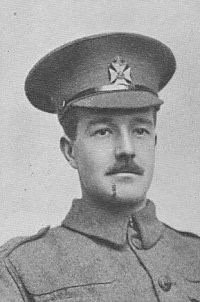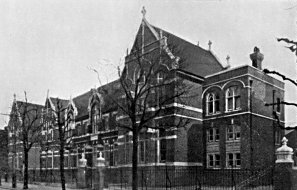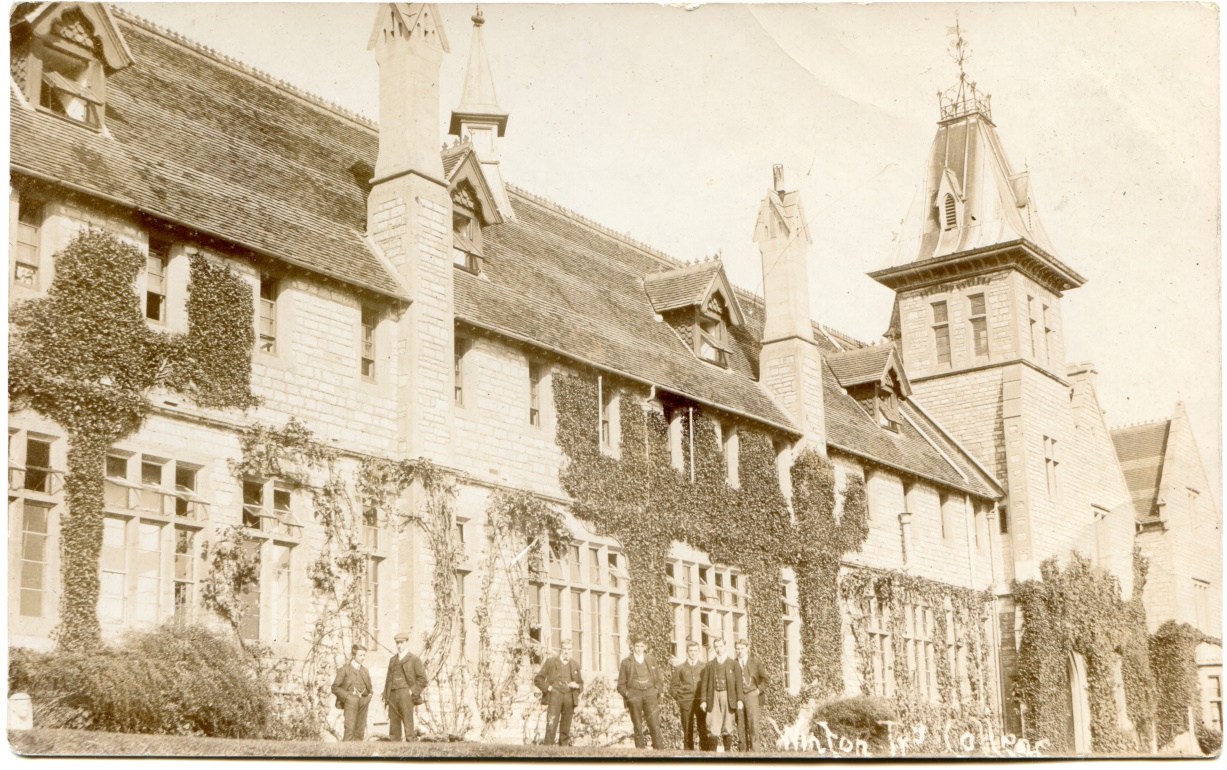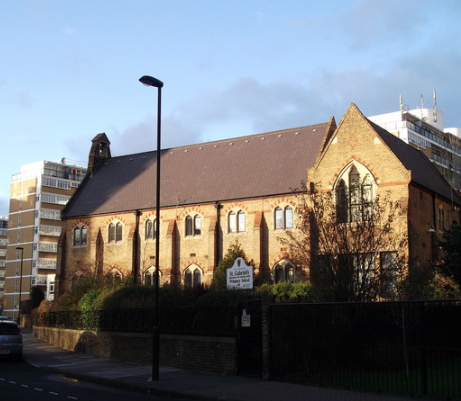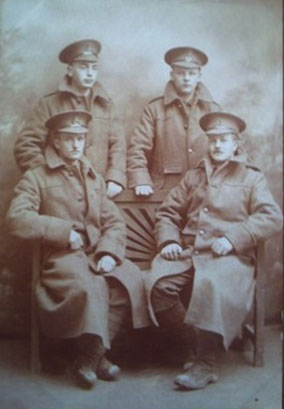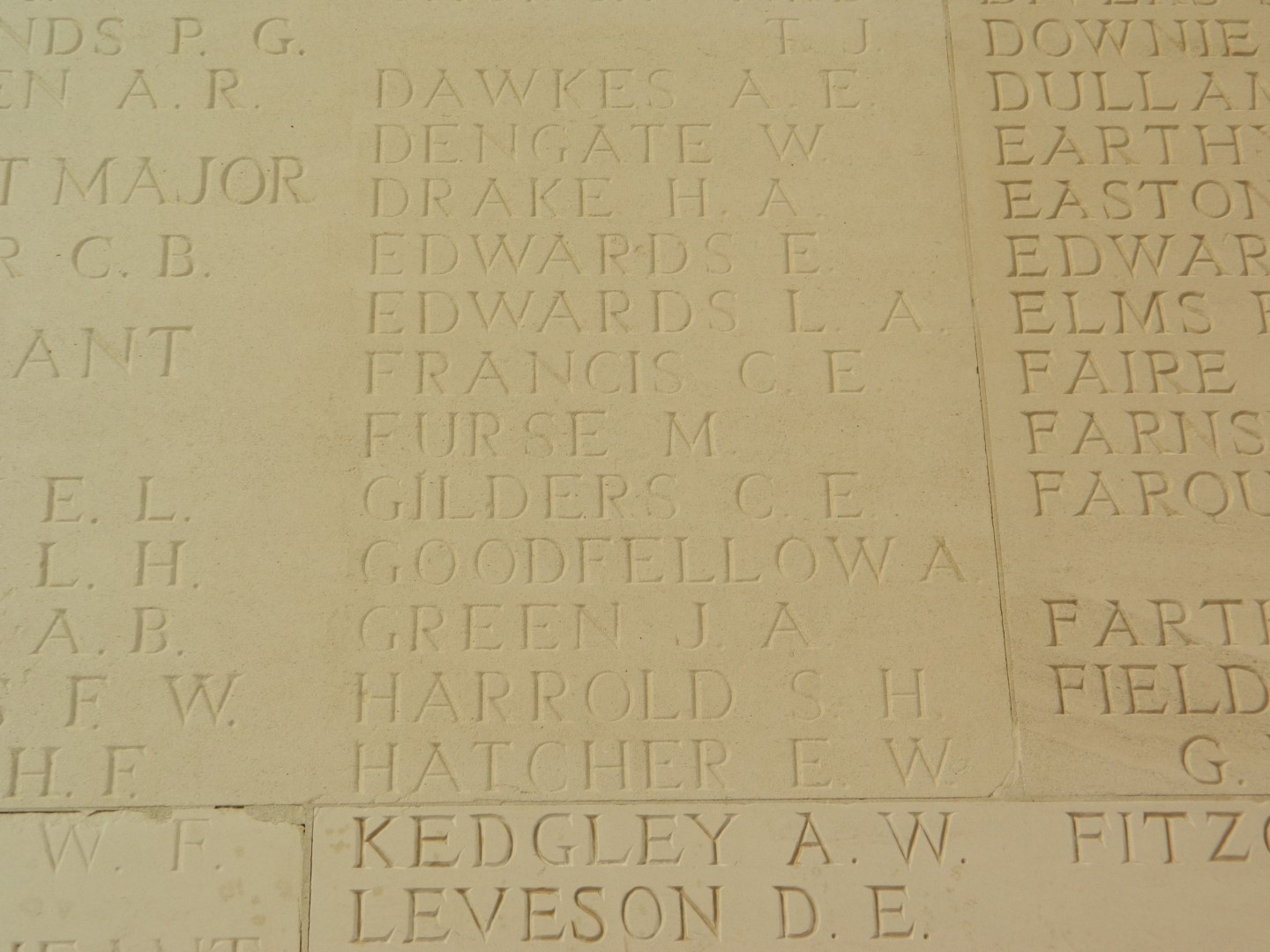Edward William Hatcher
Lance Corporal Edward William Hatcher, of 1/9th (County of London ) Battalion (Queen Victoria’s Rifles), Regimental Number 3442, was killed in action, aged 29, in the Gommecourt Wood diversionary attack on 1st July 1916, the opening day of the Battle of the Somme, and is commemorated on the Thiepval Memorial in France (Pier and Face 9C).
Family Life
Edward was born on 8th May 1887 to Edward and Emily (née Merifield) Hatcher at Portsea, Hampshire. Edward senior and Emily were both originally from Dorset. By the time of the 1891 census the family was living at 72, Stamford Street in Portsea. Edward senior (48) was working as a joiner. With him were his wife Emily Augusta (40), his eldest daughter Emily Ada (19), Arthur (17), a joiner like his father, Ellen (12) who was still at school and the youngest child Edward William (3). By the time the next census was recorded in 1901 the two oldest children were not with the family. No census records for the eldest daughter Emily have been found until she turns up again in 1911. Arthur was working as a joiner in the shipyard and living with his wife Emma and their 5 month old daughter Doris, in Portsmouth. Ellen was still living in the family home and was self-employed as a dressmaker. Edward, at 13, we may assume was still at school although nothing is mentioned in the census. Between 1899 and 1901 Edward attended the Southern Grammar School in Portsmouth. From there he became a pupil teacher at Fratton Street Church School in Portsmouth. In preparation for entry to a training college, William took courses and examinations in mathematics, physiography and drawing. He took the Examination for Admission in 1905, and the Archbishops’ Examination for entry, achieving a second class pass in both.
By the next census ten years later, Edward had started his teaching career and the family had moved away from Portsea and was living at 53, Wiltshire Road, Thornton Heath, Surrey. Edward’s mother was now calling herself by her middle name, Augusta. The 1911 census had an additional question for the wife in the family, of the number of children she had given birth to and how many were still living. She had 5 children in all but only 4 were still living. A fifth child has not featured on any of the census returns so in all likelihood died under the age of ten , and as there is a gap of nine years between the births of Ellen and Edward it is possible it was in that period. Edward was the only one of their offspring still living with them, but they had a boarder, William Siddorn (25).
Edward was described as an assistant teacher working for the County Council and William, who was also from the Portsmouth area, was an assistant teacher working for the Urban District Council. Edward’s and William’s lives followed very similar courses, with them both attending Winchester Training College at the same time. Ellen was still a dressmaker, now Ellen Orchard with two children and living in Portsmouth. There is no Mr Orchard featured on the census return but Ellen is not entered in the record as a widow. Emily Ada appears now as Ada Day, having chosen to call herself by her middle name, married, with four children, although there are only three of them on the census return. Like her sister she is the head of the household but not described as a widow. The two eldest of her children were born in Burma, and she may have been married in India. They are living in Canterbury Villa, Wiltshire Road, Thornton Heath, the same road as her parents. No documentary evidence has yet been found to establish the whereabouts of Mr. Orchard and Mr. Day but there is the possibility that Ellen’s husband was in the Navy and Ada’s was a soldier.
Training to Teach
Edward attended Winchester Diocesan Training College between 1906 and 1908, having left the Southern Grammar School in 1901. The Southern Grammar School Roll of Honour records: ‘E W Hatcher left the school to serve his apprenticeship as a Pupil Teacher in one of the Portsmouth schools.’
This suggests Edward worked in the Fratton Road School for five years, first as a pupil teacher and then as an uncertificated or assistant teacher.
The annual Sports day was a popular feature of College life and included a number of novelty events. Edward was placed third in the Bicycle Steering Race and won the Wheelbarrow Race with William Siddorn, a friend who crops up frequently in Edward’s life.
In his Senior year, as reported in the Wintonian 08-10, Edward was a member of the Seniors’ Tennis Team.
At the end of his two year course Edward was awarded a B grade in Music and Drawing and a C grade in Reading and Recitation, Teaching and Science. His overall classification was Class 2. He achieved a third class pass in the Archbishops’ exam in his final year, having had a class 2 pass the previous year. His average mark in his final exams was 62.05%.
When Edward had completed his two years at Winchester College he was required to teach as an Assistant Teacher for two years before he was considered to be fully qualified. There are two different sources for his teaching career. When he left College, according to the Southern Grammar School Roll of Honour, he began his career as an Assistant Teacher in Pimlico, London. The N.U.T. War Dead School’s List gives St. Gabriel’s CS School, Westminster, but these are actually the same school.
In the 1911 census return Edward was in Thornton Heath, near Croydon. This would have been a long daily commute to Pimlico, but it is possible that Edward was only recorded as being in Thornton Heath at the family home, as the census was recorded in the school Easter holiday.
From the Outbreak of War to the Somme
Shortly after the declaration of war Edward enlisted in the 9th (County of London) Battalion (Queen Victoria’s Rifles). His biography published on the Southern Grammar School Roll of Honour, states that when war was declared Edward was on holiday in Switzerland. Perhaps he had been inspired to travel there by the mountaineering exploits of the College Principal Henry Martin, who ‘When war came he was on holiday in Switzerland, and in common with others had some difficulty in getting home. In November 1914, he responded to the call for men by enlisting as a Private.’
While training in Crowborough, Edward along with three other young men, including William Siddorn who had been a boarder with his parents in Thornton Heath, posed for a photograph. They have signed the photograph on the back, so can be identified as A.M. Butterwick, N.H. Smith, W.E.Siddorn and E.W.Hatcher. It is not known whether Edward and William Siddorn enlisted together. They were both from the Portsmouth area, had both done their training at Winchester and were teaching in or around London, and William was a lodger in the house of Edward’s parents. They enlisted in the same regiment and were most likely firm friends. Shortly after this photograph was taken they left England for France, arriving at the end of March 1915. Of the four men in the photograph only one would survive the war, Edward’s friend William Siddorn.
The Southern Grammar School Roll of Honour gives an account of Edward’s war after landing in France.
Within a month he saw desperate fighting at Hill 60, St. Julien, and in the second Battle of Ypres On 1st July 1916 the 9th Londons attacked in the early morning on the right of Gommecourt Wood, north of Albert, and took 3 lines of German trenches, which they held for several hours. Then the enemy put up a heavy barrage behind our men to stop reinforcements from coming up, and at the same time made a vigorous counter-attack. While bombs lasted, a stout resistance was offered, but in the subsequent retirement very heavy casualties were suffered, not a hundred returning of the three companies of the 9th London that set out in the morning. CORPORAL HATCHER was among the many who were reported missing. LATER, a comrade from a camp of British war prisoners reported that HE HAD SEEN HIM, severely wounded in the back, lying quite still in an exposed position where it was quite impossible to render any assistance. No more definite information has ever reached his relatives so it is concluded he must have succumbed to his wounds.
It was also noted that a survivor made mention of ‘Mr. Hatcher’s fearless behaviour and of the esteem in which he was held.’
Edward is described as having been killed in action even though he was apparently seen still alive on the battlefield. The terms killed in action and died of wounds have clear definitions. If a casualty dies, from the result of hostile action, without receiving any medical attention he is deemed to have been killed in action. If he was taken to any aid post, even if that was on the battlefield, he was said to have died of wounds.
Pier and Face 9C Thiepval photograph by Peter Lidgitt and Pat Naylor
In his Soldier’s Effects record it gives his death as presumed 1/7/16 and notes that he leaves £4 13s 6d.
Edward is commemorated at Thiepval, France. The Thiepval Memorial was designed by Edwin Lutyens as the memorial to the Missing of the Somme, and bears the names of more than 72,000 officers and men of the United Kingdom and South African forces who died in the Somme sector before 20th March 1918 and have no known grave. Over 90% of those commemorated died between July and November 1916.
He is also commemorated on the Southern Grammar School memorial stone, which is now lodged with the Portsmouth City archivist.
Researcher and Author: Dee Sayers
The Thiepval Memorial photograph courtesy of cwgc
Sources
Ancestry (2018). Home page. [online] Available at: www.ancestry.co.uk [Accessed 2018].
British Newspaper Archive (2018). Hampshire Chronicle – Saturday 30 May 1908, p.7. [online] Available at: https://www.britishnewspaperarchive.co.uk/viewer/bl/0000231/19080530/098/0007 [Accessed 2018].
Commonwealth War Graves Commission, (2018). Home page. [online] Available at www.cwgc.org/ [Accessed 2018].
Epitaphs of the Great War (2018). Killed in Action: Died of Wounds. [online] Available at: www.epitaphsofthegreatwar.com/killed-in-action/ [Accessed 2018].
Geograph (2011) St Gabriel’s Primary School, Pimlico – image. [online] Available at: http://www.geograph.org.uk/photo/2736045 [Accessed 2018].
General Register Office. (2019). Registration Services – GRO Online Index. [online] Available at: https://www.gro.gov.uk/gro/content/certificates/indexes_search.asp [Accessed 19 May 2019].
Hadden, A. (Personal contact). Photographs and biographical information.
Memorials & Monuments in Portsmouth (2018). Southern Grammar School Roll of Honour (1914-1918) Biographies. [online] Available at: http://www.memorialsinportsmouth.co.uk/others/sgs/1914-1918-biograph02.htm [Accessed 2018].
Southern Grammar School for Boys, Portsmouth 1888-1975 (2018). Home page. [online] Available at: southerngrammar.com [Accessed 2018].
Vickers, J. University of Winchester Chapel Memorial Rail image.
| University of Winchester Archive “ Hampshire Record Office | ||
| Reference code | Record | |
| 47M91W/ | P2/4 | The Wintonian 1899-1900 |
| 47M91W/ | P2/5 | The Wintonian 1901-1902 |
| 47M91W/ | P2/6 | The Wintonian 1903-1904 |
| 47M91W/ | P2/7 | The Wintonian 1904-1906 |
| 47M91W/ | P2/8 | The Wintonian 1905-1907 |
| 47M91W/ | P2/10 | The Wintonian 1908-1910 |
| 47M91W/ | P2/11 | The Wintonian 1910-1914 |
| 47M91W/ | P2/12 | The Wintonian 1920-1925 |
| 47M91W/ | D1/2 | The Student Register |
| 47M91W/ | S5//5/10 | Photograph of 5 alumni in Mesopotamia |
| 47M91W/ | Q3/6 | A Khaki Diary |
| 47M91W/ | B1/2 | Reports of Training College 1913-1914 |
| 47M91W/ | Q1/5 | Report and Balance Sheets 1904- 1949 |
| 47M91W/ | R2/5 | History of the Volunteers Company 1910 |
| 47M91W/ | L1/2 | College Rules 1920 |
| Hampshire Record Office archive | ||
| 71M88W/6 | List of Prisoners at Kut | |
| 55M81W/PJ1 | Managers’ Minute Book 1876-1903 | |
| All material referenced as 47M91W/ is the copyright of The University of Winchester. Permission to reproduce photographs and other material for this narrative has been agreed by the University and Hampshire Record Office. | ||


